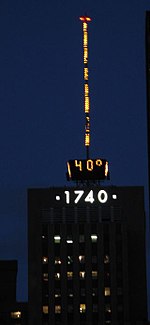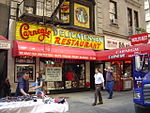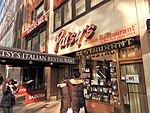Ariston Bathhouse raid
1900s in LGBT history1903 in New York CityAll pages needing cleanupFebruary 1903 eventsGay bathhouses in New York City ... and 5 more
History of gay men in the United StatesLGBT history in New York CityMidtown ManhattanPolice raids to LGBT venuesWikipedia introduction cleanup from February 2018
The Ariston Bathhouse raid in 1903 was the first anti-gay police raid on an establishment located in New York City. It resulted in thirty-four arrests, sixteen charges of sodomy, and twelve trials, five of which possess transcripts.
Excerpt from the Wikipedia article Ariston Bathhouse raid (License: CC BY-SA 3.0, Authors).Ariston Bathhouse raid
West 55th Street, New York Manhattan
Geographical coordinates (GPS) Address Nearby Places Show on map
Geographical coordinates (GPS)
| Latitude | Longitude |
|---|---|
| N 40.764722222222 ° | E -73.981944444444 ° |
Address
West 55th Street 213
10019 New York, Manhattan
New York, United States
Open on Google Maps







